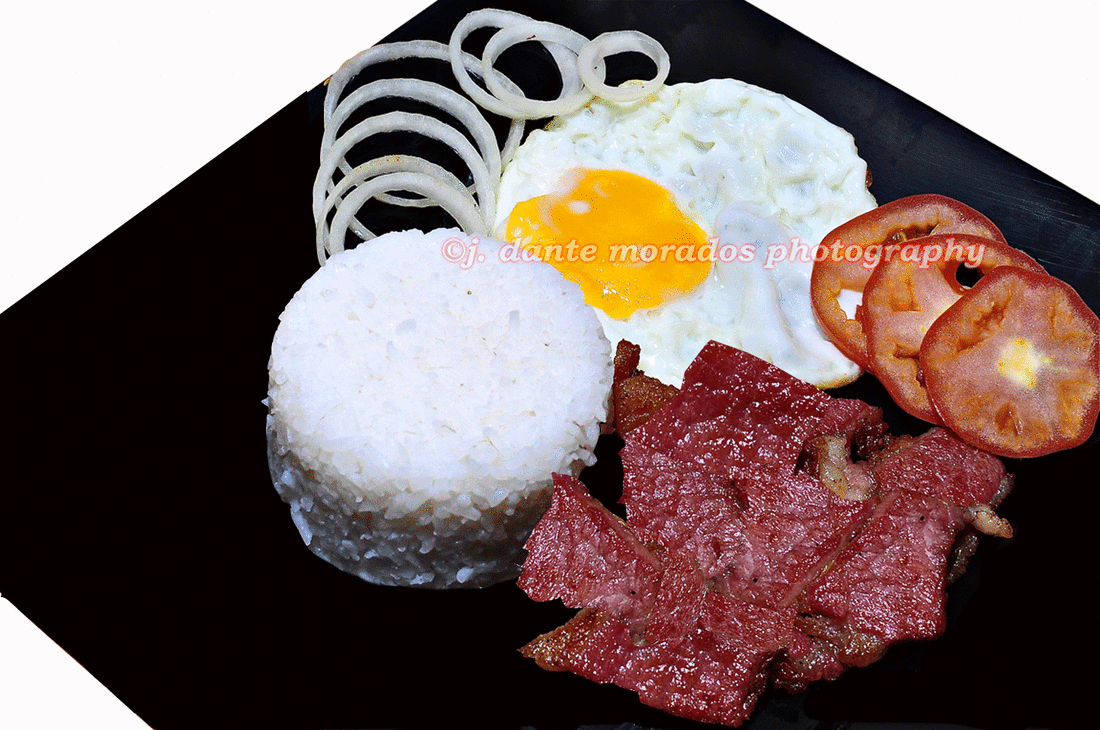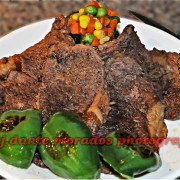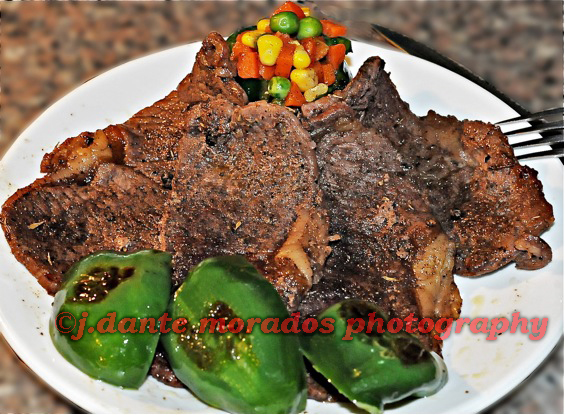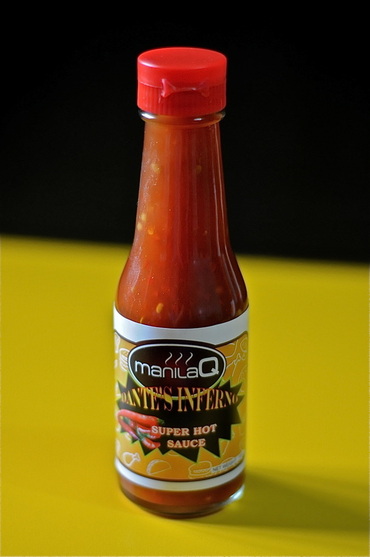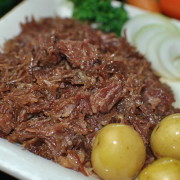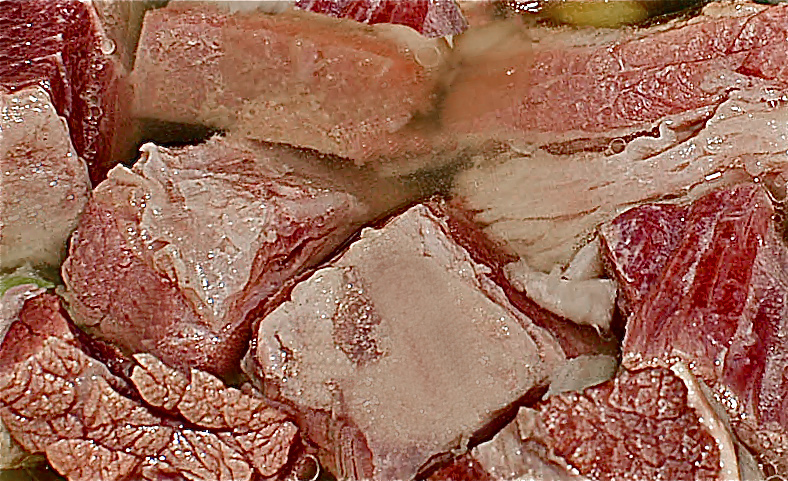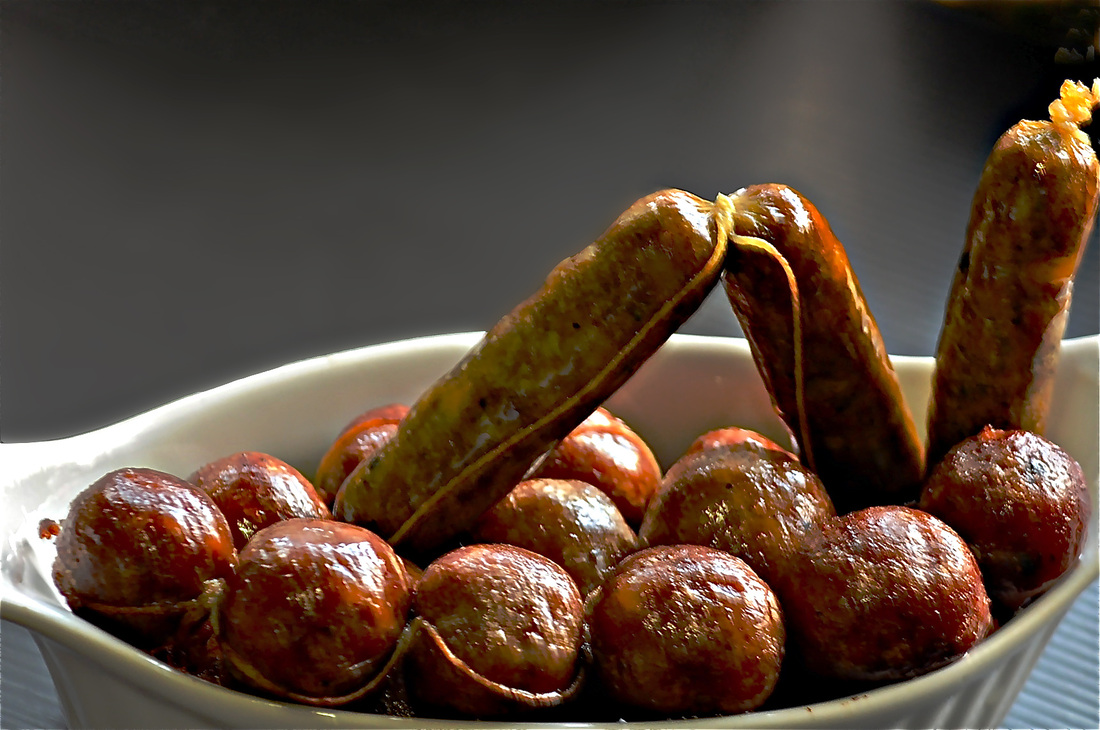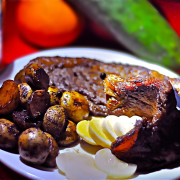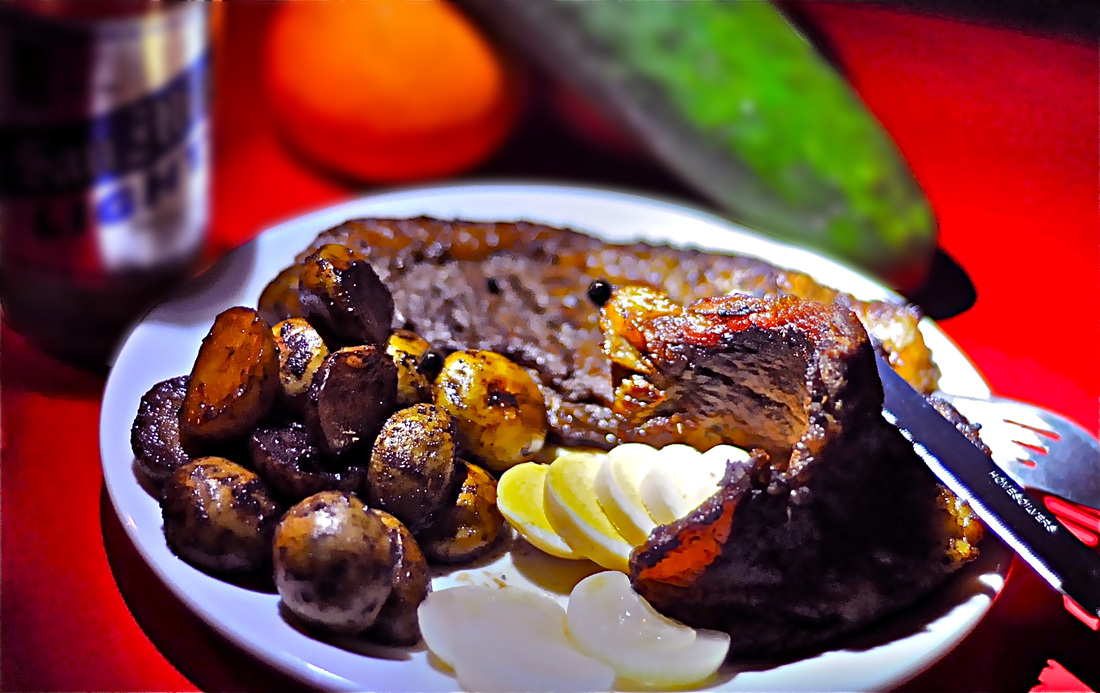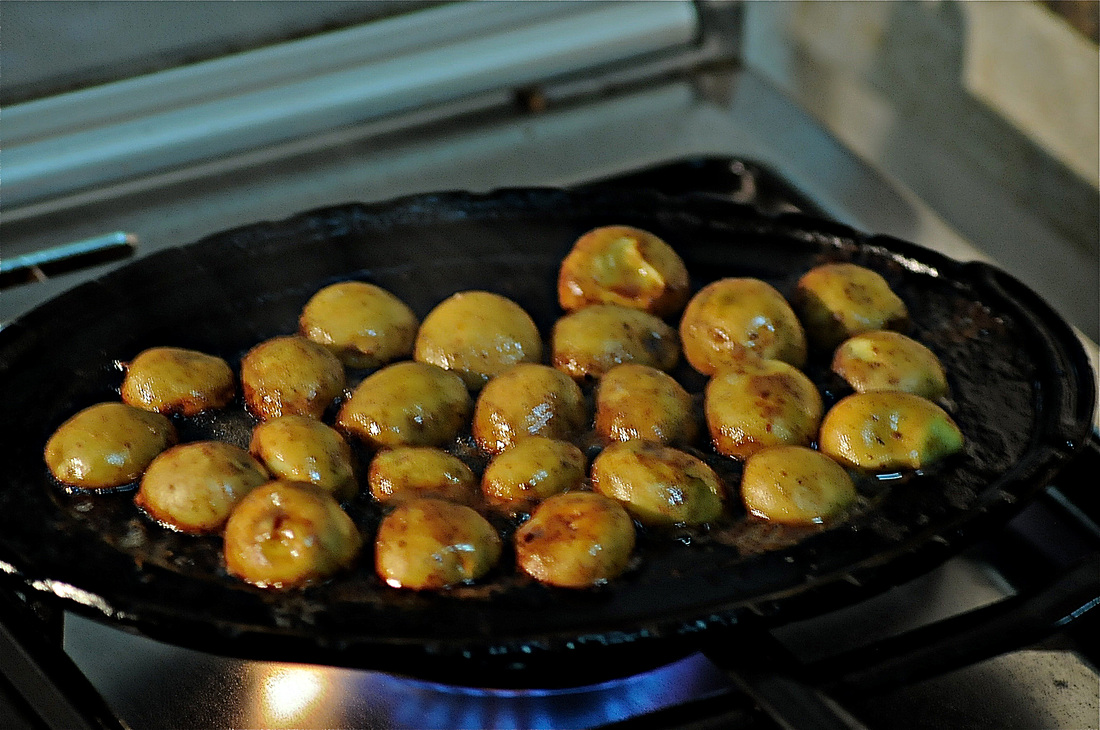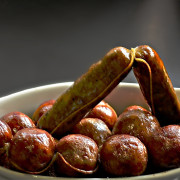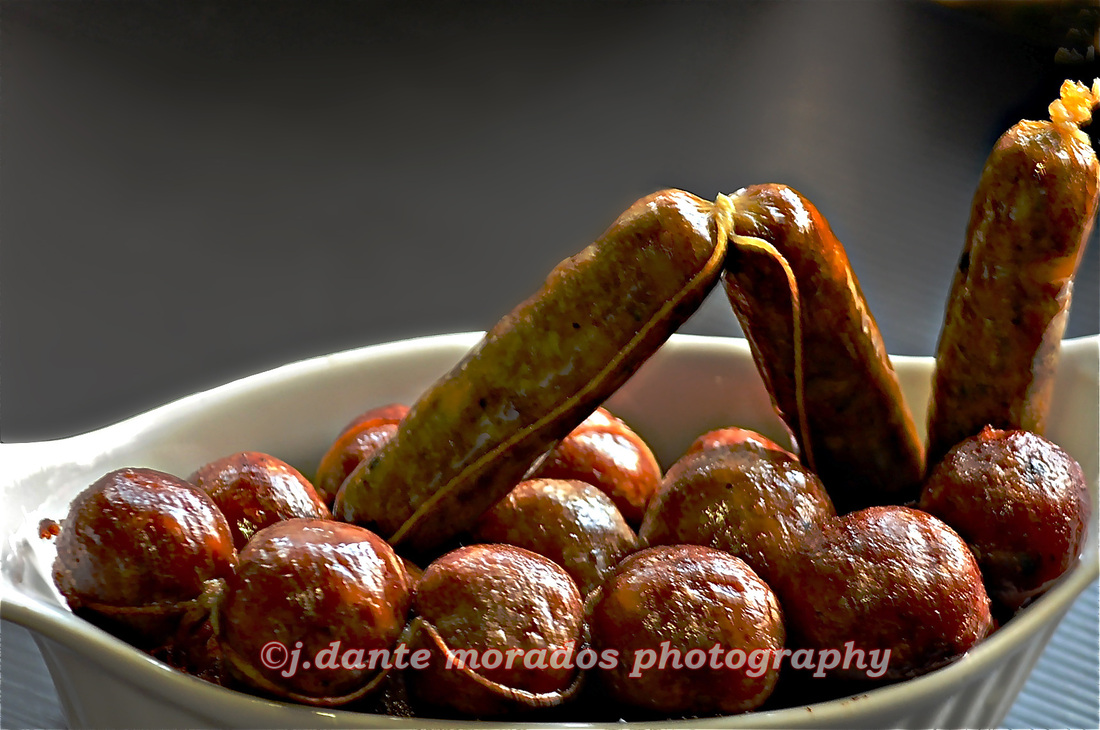Good Old Style TAPA (Seasoned Dried Fried Beef Strips)
GOOD OLD STYLE “TAPA”
(SEASONED DRIED BEEF STRIPS)
From 60’s to late 70’s, “Tapa”, a Filipino term for plain salted,
dried and fried cattle beef strips, was a hit.
Being sun-dried to minimum of 4 hours,
it was then a bit tough to bite.
Meals were known as “Tapa-Egg”
(a combination of fried “Tapa”, sunny side-up egg [“itlog”],
garlic fried rice [“sinangag”]
and free boiled meat-bones flavored soup).
(SEASONED DRIED BEEF STRIPS)
From 60’s to late 70’s, “Tapa”, a Filipino term for plain salted,
dried and fried cattle beef strips, was a hit.
Being sun-dried to minimum of 4 hours,
it was then a bit tough to bite.
Meals were known as “Tapa-Egg”
(a combination of fried “Tapa”, sunny side-up egg [“itlog”],
garlic fried rice [“sinangag”]
and free boiled meat-bones flavored soup).
Early 80’s witnessed the start of modification of this fad.
Rising acquisition costs for the pricey cattle beef strips,
and hunger for higher profit led producers and “carenderia”
(hole in the wall eateries) owners to switch meat raw mat.
It became known as:
“TAPSILOG”
(acronym for TAPa-SInangag-itLOG)Gone were the days of sun-dried tough cattle beef “Tapa”.
Used were (and still are…till today)
salted-flavored-sodium nitrite cured-boiled
“cara” beef
(from India’s water buffalo and/or the domesticated carabao)
Today, some use “external flesh” “cara” beef strips
while some opted for the internals called “lomo sa loob” (loin inside)
A misnomer.
“Lomo sa loob” is actually the “meaty” part of
carabao’s tongue root.
And this “lomo sa loob’ is the one utilized by ALMOST ALL restos
for “beef mami”, “pares” and other meaty recipes.SO NOW…YOU KNOW WHAT YOU’RE EATING.Let me bring you back to the “TAPA” our “lolo and lola”
(grandparents) used to enjoy, but, again,
with a twist.
Instead of plain cattle beef…
we will use 100% U.S. cattle short plate.
Not just plain salted but marinated in simple flavorful blend.
Cured by food grade sodium nitrite (if used) for pinkish-color aesthetics and for longer shelf-life of product.INGREDIENTS:
MEAT:
1 kilo thinly sliced short plate (or your choice of any part)
(Short plate elicits more taste but not much tender-ness)
MARINADE:
1 kilo tap water
15 grams salt
10 grams cane sugar
2 grams ground black pepper
3 pieces sliced “labuyo” (bird’s eye red pepper) for “kick”
6 grams (OPTIONAL) meat cure
(Pink Prague Powder or JD Cure or any available brand in your supermarket. This will age and cure our Tapa giving it pinkish-red color when fried while preserving longer in ref when not in use)
FRYING MEDIA:
pan
tongs
EVOO (Extra Virgin Olive Oil) quantity as needed
SIMPLEST PROCEDURES:
1. In water, dissolve all ingredients to create the marinade.
Tumble and toss well that no lumps are visible.
2. In suitable tray, line up beef slices. Pour in marinade.
Massage beef pieces a bit to ensure marinade penetration.
3. Refrigerate overnight. (DO NOT FREEZE as freezing will solidify water
that beef strips will not be able to absorb the needed flavor)
4. Line up marinated strips in suitable tray. Under direct sunlight,
sun dry for 3 hours on each side.
(In areas where sun drying is not do-able:
a. air dry in a open area for 3 days, flipping strips to other side every now and then OR
b. drain and hang beef strips for 2 days atop your cooking area where heat of the stove will dry them up)
5. Now fully dried up, fire up your stove and fry “Tapa” in little EVOO for 30 seconds on each side for a medium well.
6. Either with steamed or fried rice, garnish your “aged beef strips” (Tapa) and serve with a smile to loved ones.
Rising acquisition costs for the pricey cattle beef strips,
and hunger for higher profit led producers and “carenderia”
(hole in the wall eateries) owners to switch meat raw mat.
It became known as:
“TAPSILOG”
(acronym for TAPa-SInangag-itLOG)Gone were the days of sun-dried tough cattle beef “Tapa”.
Used were (and still are…till today)
salted-flavored-sodium nitrite cured-boiled
“cara” beef
(from India’s water buffalo and/or the domesticated carabao)
Today, some use “external flesh” “cara” beef strips
while some opted for the internals called “lomo sa loob” (loin inside)
A misnomer.
“Lomo sa loob” is actually the “meaty” part of
carabao’s tongue root.
And this “lomo sa loob’ is the one utilized by ALMOST ALL restos
for “beef mami”, “pares” and other meaty recipes.SO NOW…YOU KNOW WHAT YOU’RE EATING.Let me bring you back to the “TAPA” our “lolo and lola”
(grandparents) used to enjoy, but, again,
with a twist.
Instead of plain cattle beef…
we will use 100% U.S. cattle short plate.
Not just plain salted but marinated in simple flavorful blend.
Cured by food grade sodium nitrite (if used) for pinkish-color aesthetics and for longer shelf-life of product.INGREDIENTS:
MEAT:
1 kilo thinly sliced short plate (or your choice of any part)
(Short plate elicits more taste but not much tender-ness)
MARINADE:
1 kilo tap water
15 grams salt
10 grams cane sugar
2 grams ground black pepper
3 pieces sliced “labuyo” (bird’s eye red pepper) for “kick”
6 grams (OPTIONAL) meat cure
(Pink Prague Powder or JD Cure or any available brand in your supermarket. This will age and cure our Tapa giving it pinkish-red color when fried while preserving longer in ref when not in use)
FRYING MEDIA:
pan
tongs
EVOO (Extra Virgin Olive Oil) quantity as needed
SIMPLEST PROCEDURES:
1. In water, dissolve all ingredients to create the marinade.
Tumble and toss well that no lumps are visible.
2. In suitable tray, line up beef slices. Pour in marinade.
Massage beef pieces a bit to ensure marinade penetration.
3. Refrigerate overnight. (DO NOT FREEZE as freezing will solidify water
that beef strips will not be able to absorb the needed flavor)
4. Line up marinated strips in suitable tray. Under direct sunlight,
sun dry for 3 hours on each side.
(In areas where sun drying is not do-able:
a. air dry in a open area for 3 days, flipping strips to other side every now and then OR
b. drain and hang beef strips for 2 days atop your cooking area where heat of the stove will dry them up)
5. Now fully dried up, fire up your stove and fry “Tapa” in little EVOO for 30 seconds on each side for a medium well.
6. Either with steamed or fried rice, garnish your “aged beef strips” (Tapa) and serve with a smile to loved ones.


